St Mary’s Chapel is a building site again as we complete the restoration of the Chapel begun in 2020. Following creation of the wheelchair access and related changes, work was paused but started again at the end of April with a scheduled completion in early November 2024. We will publish a series of Blogs and videos so that people can see the progress. The main work concerns the plaster because a gypsum-based plaster had been applied about 50 years ago. Apart from being unsuitable for a building of this age, it had also suffered from water ingress before the roof was replaced more than decade ago. For old buildings, and the Chapel dates back to about 1450, a lime-based plaster should be used. So the biggest part of this second phase of the restoration was to replace the existing plaster with a lime-based one.
When the contract with North Group started in April 2024, the first steps were to protect all the existing features which could not be moved. These included the font, ‘altar’, some carved wood panels, civic pew and choir desk. All the windows and floor were also covered, then the old electric circuits and lights were removed.
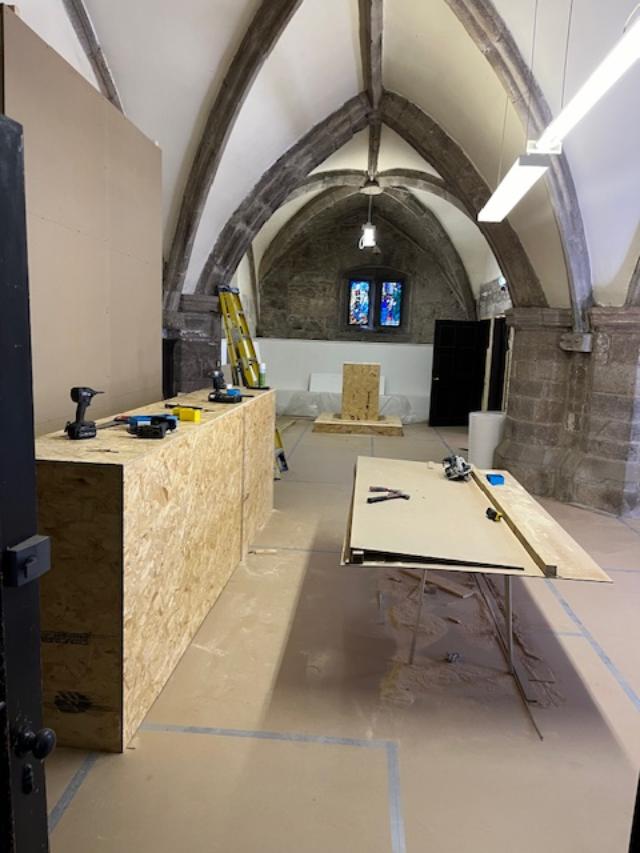
Removal of the old plaster was carried out by hand using a hammer and chisel. This required moveable platforms to gain access, but even so a lot of the actual work was carried out overhead. It was found that the plaster varied in thickness, reaching almost 2 inches in places. This was very hard physical work for the men involved. This work was carried out with an archaeologist present in case anything of historic interest was uncovered. There were two areas of particular interest, but nothing definitive was uncovered, although a number of further ‘mason marks’ were found. These marks were carved into the stone by a mason as a sign that they had carved it and so could claim pay for doing it. Once all the plaster was removed, the whole of the exposed walls and vaulting was recorded photographically for posterity.
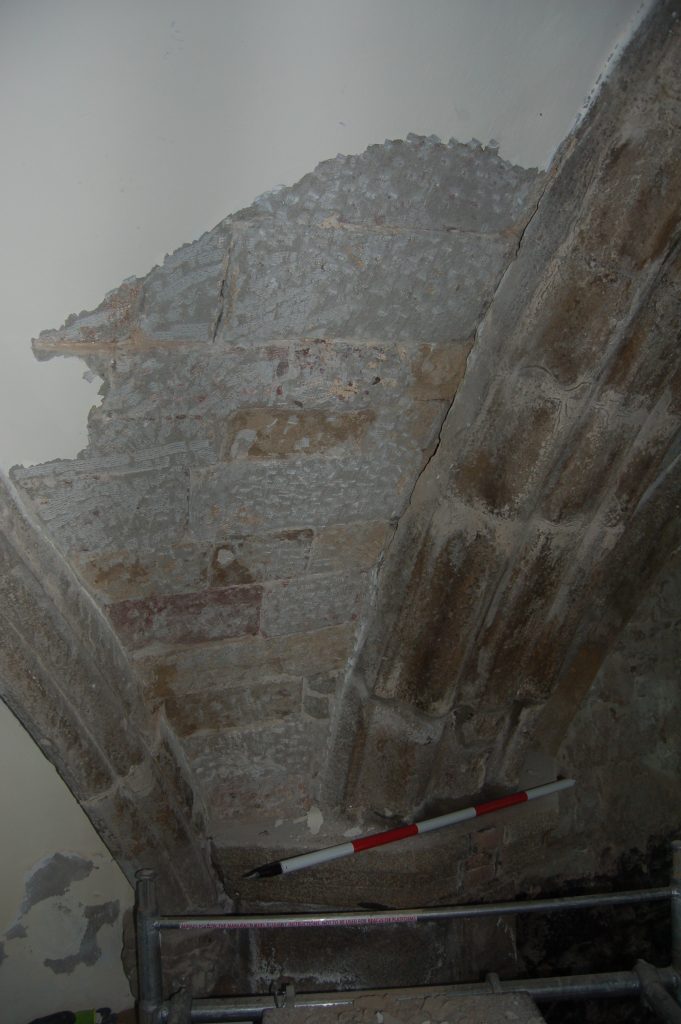
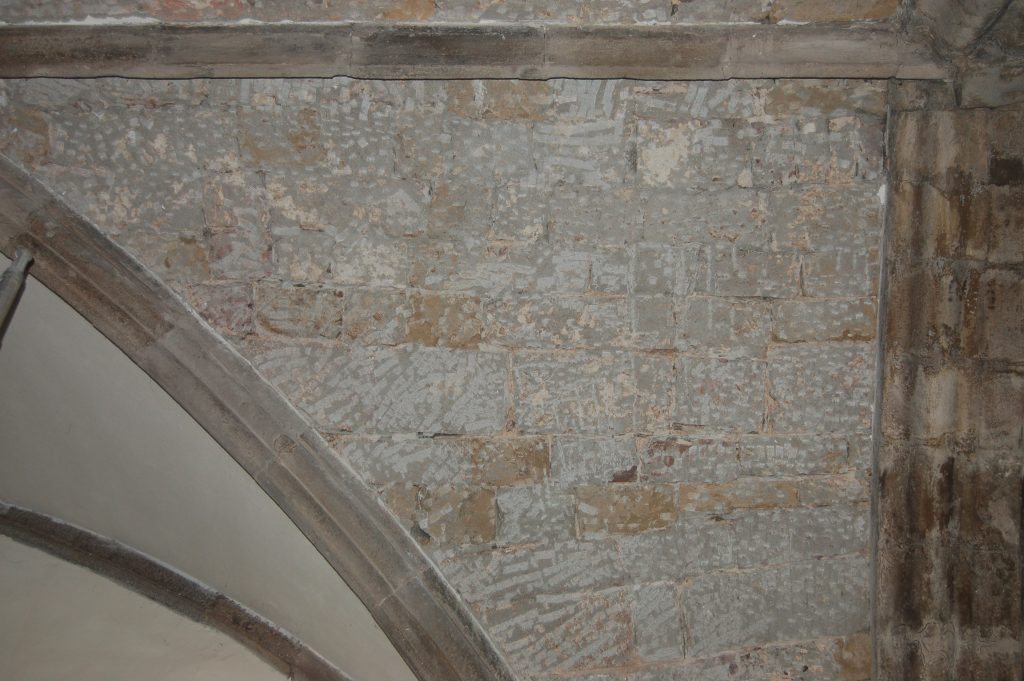
The joints between the uncovered stones were chipped out and re-pointed, before any new plaster was applied. In places quite extensive work was need to ‘pack’ the joints. Whilst the floor area of the Chapel is not large, the walls and vaulted ceiling amounts to a significant area. As expected, this work took quite a long time to complete.
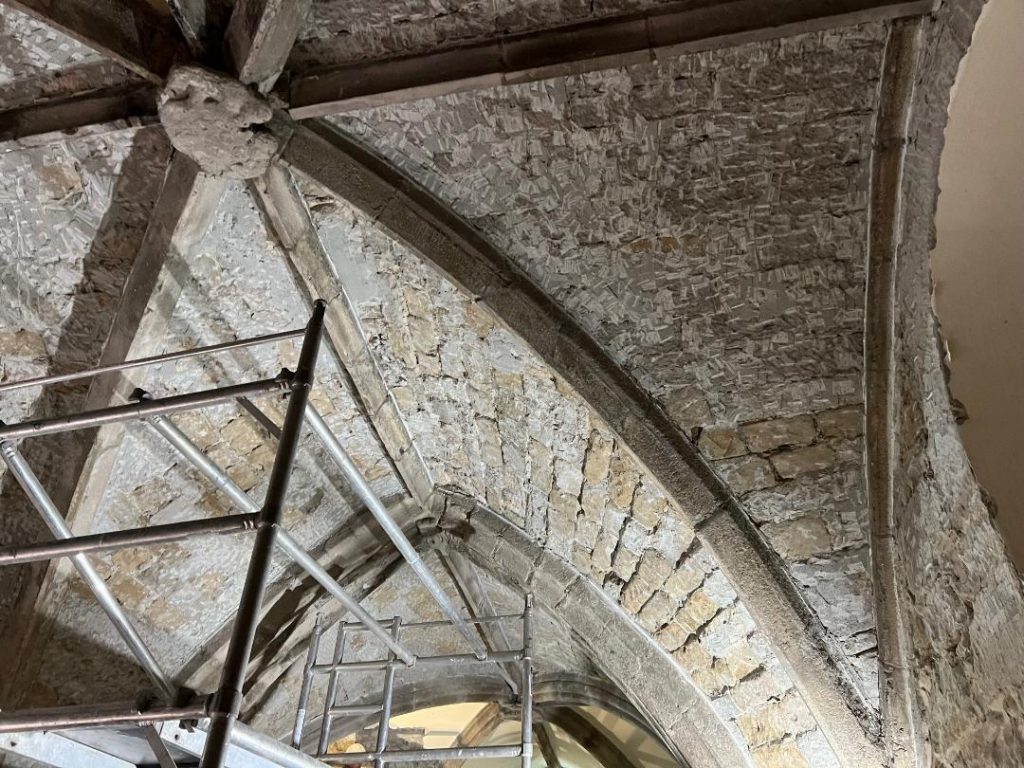
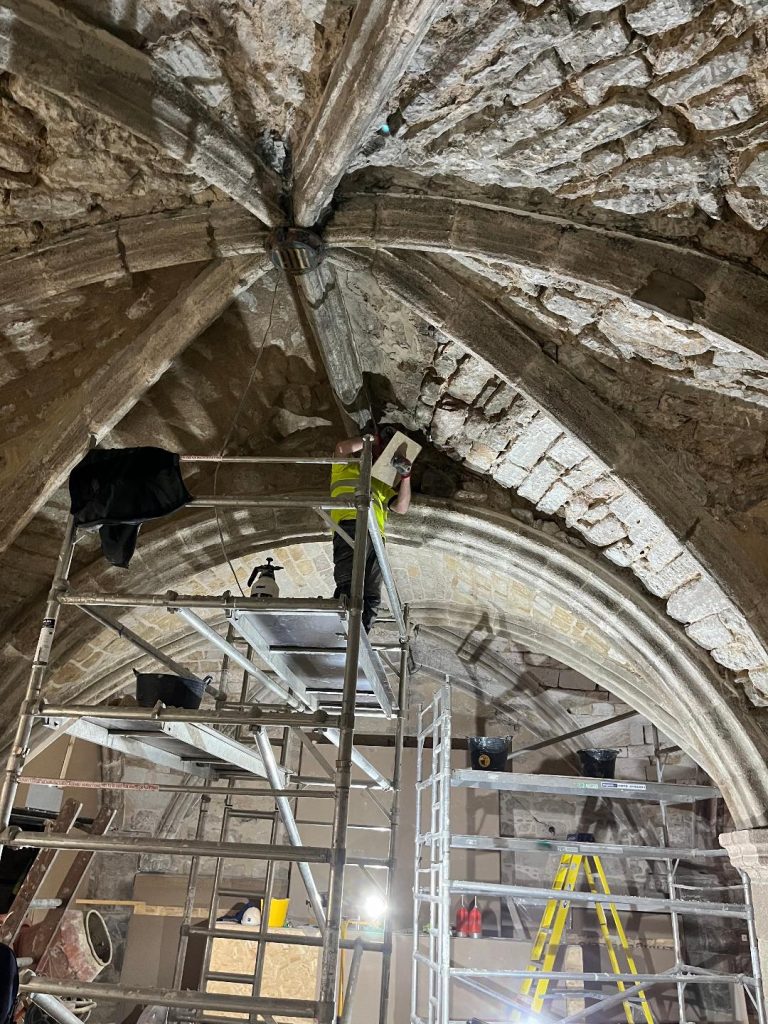
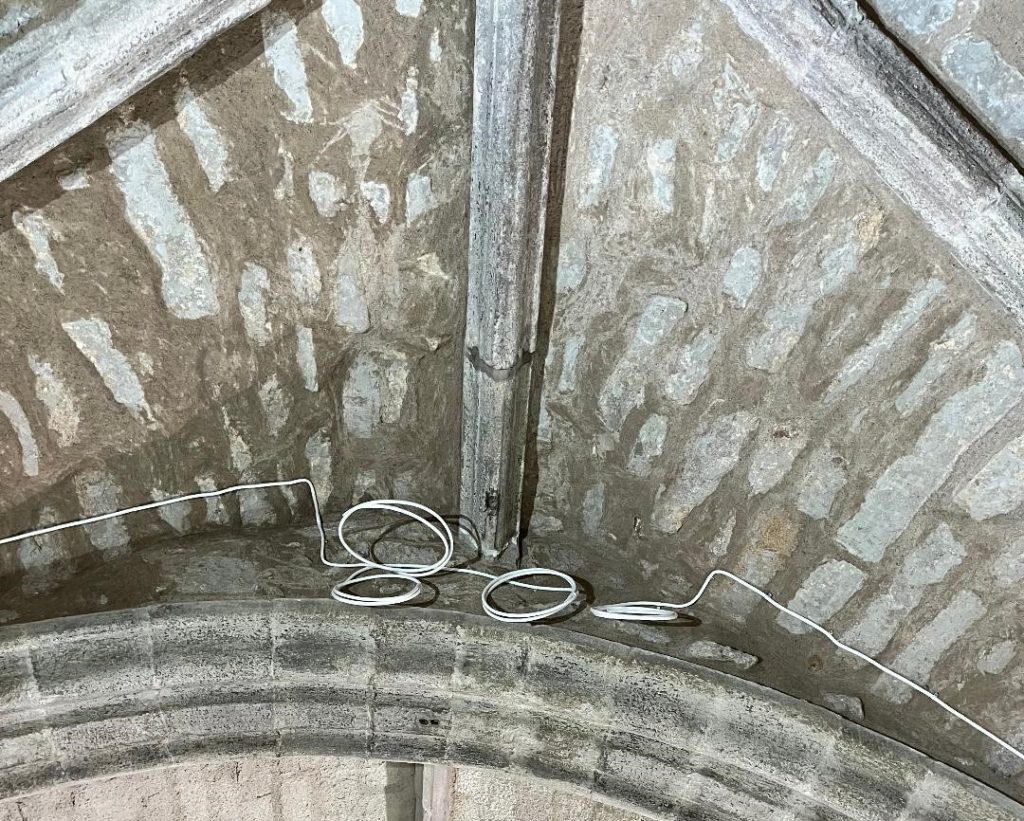
The photographs have been taken at various stages in this initial work. There are also videos of some of this available via the Tab ‘Videos’.